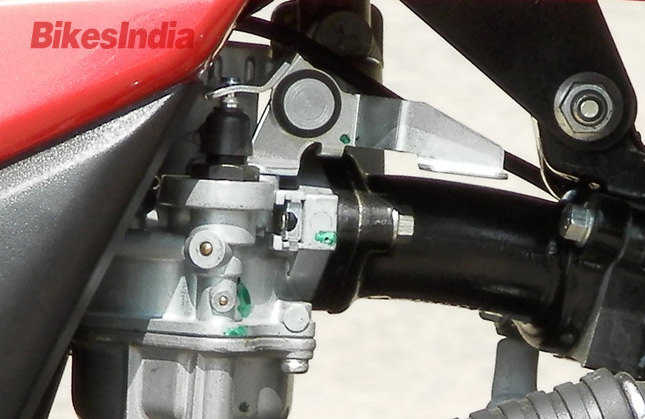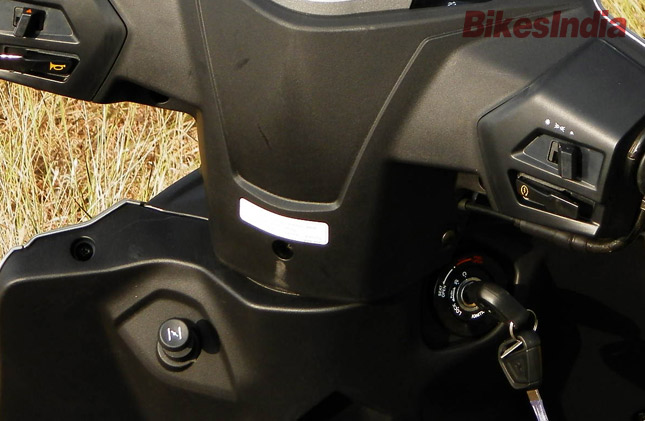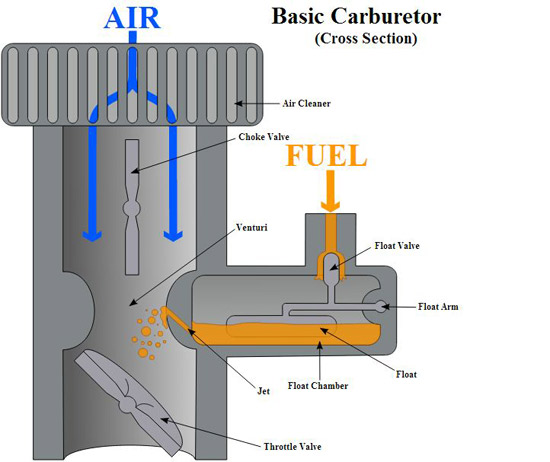 At least once in your lifetime you must have pulled the choke of your two wheeler when it denies to start, the same also comes to your rescue when you either start your bike/scooter after considerable longtime or even just for the first time in the morning specially in winter season.
At least once in your lifetime you must have pulled the choke of your two wheeler when it denies to start, the same also comes to your rescue when you either start your bike/scooter after considerable longtime or even just for the first time in the morning specially in winter season.What is this Choke all about? How it comes to your rescue? And why if left engaged for a long time by mistake, can gulp all of your petrol in no time? All these and many more questions come to our mind when we talk about “Choke”. A magical pull or push lever featured on all carbureted two wheelers can easily be located either directly mounted on the carburetor or placed on the handlebar or on the dash panel of scooters in some cases.
What is a Choke?
A choke in a carbureted internal combustion engine (be it a 2-stroke or 4-stroke engine) is a “Valve” present in the carburetor, normally the valve is a butterfly type which on pulling can block (choke) the fresh air supply to the carburetor. The choke can be pulled directly if it is placed right on the carburetor and can be pulled via cable if the pull plug is featured elsewhere on the two wheeler.
 What is the use of Choke?
What is the use of Choke?The choke is normally used when the engine is failed to crank after couple of tries, the failure could be caused by ‘n’ number of reasons. It is also recommended by many manufacturers that one should use the choke to start the bike/scooter when it is getting started for the first time in a day (normally in morning time). In a nutshell the choke comes handy when the engine gives you starting trouble, especially when it is at a cold state.
If we talk technical here, there are more than one reason behind the trouble while cold starting the engine:
1. The system becomes dry, the walls of the combustion chamber also become dry as the fuel gets evaporated in due course of time and hence the combustion doesn’t get any help from the overall atmosphere.
2. The petrol is not used in its original state i.e liquid for combustion, it is actually turned into vaporized form while passing through very fine jet holes before mixing with air. In cold state the density of the petrol gets affected and the vapors turned into droplets which don’t burn easily and hence give you starting trouble in cold sate.
READ ALSO: Motorcycle Fuel Injection (Fi) System Explained2. The petrol is not used in its original state i.e liquid for combustion, it is actually turned into vaporized form while passing through very fine jet holes before mixing with air. In cold state the density of the petrol gets affected and the vapors turned into droplets which don’t burn easily and hence give you starting trouble in cold sate.
How Choke works?
Now, when we all know that in what circumstances we need to apply choke, it is important to know how actually choke works. As we’ve already explained above, the choke is a valve situated right at the body of the carburetor. It is placed in between the air intake from the air filter and the Venturi present in the carburetor. True to its name the “Choke” actually chokes the fresh air intake from the air filter to the carb. The shape of the choke valve is normally butterfly and when it is pulled, it rotates to block the passage of the air from both the sides with both of its wings.
READ ALSO: Carburetor Vs Fuel Injection- Motorcycle Fuel Systems
Now what happens, in the absence of the air stream there creates a partial vacuum inside the carburetor which in turn draws extra fuel from the jet into the intake manifold. This is the reason you’ve always been told not to give acceleration (or twist the throttle) while the choke is pulled, because there is already extra fuel being drawn into the intake manifold due to the choke. If you further turn the throttle on, the system will be flooded with the petrol and it would cost you what is best known as “Over” state.
 Diagram- Wikipedia
Diagram- WikipediaThe extra atomized (vaporized) fuel drawn because of choke provides extra chance to the combustion system to get the engine started, as the every extra vaporized fuel particle adds extra chance to the system to get started. When the system is flooded with the pure atomized fuel, no matter if the particles are turned into droplets due to the cold state, there is an increased chance of a single particle to catch fire if squirted near to the sparkplug or at the right time, rest will be taken care by the Chain Reaction and the engine gets started lightning fast.
Benefit of Choke:
You might be thinking that if the sole purpose of the choke is to draw that extra fuel to the system, which can also be done by opening the throttle, then why we use choke? The answer to this question is simple, when we open the throttle, what we are doing is to draw a mixture of air and fuel both, the harder we open the throttle the more amount of air/fuel mixture we draw from the carburetor. On the other hand when we pull the choke, we only draw more fuel as the choke restricts the air supply.
READ ALSO: Motorcycle Fuel Management System (FMS) Explained
Now you may also think that what is the use of additional system (choke) when we can draw extra fuel of course with extra air by simply opening the throttle? Most definitely, the ideal mixture of air and fuel is what required for normal functioning of the engine. But here our concern is not the normal functioning of the engine neither we care about the momentary mileage; all we care is about the cranking of the engine (to start the engine). And for this we require more amount of fuel and therefore by applying the choke we restrict the air and compensate even that volume with the pure fuel.
Of course there is always minimum amount of air (oxygen) available in the cylinder to burn the extra rich fuel mixture. Here if you ever noticed the engine gets fired almost instantly but abruptly when the choke is applied. This is just because of the same reason given above that there is plenty of fuel flushed into the intake manifold and that fuel burns erratically but almost instantly due to limited air supply. Once the engine reaches at a particular temperature and we push down the choke the normal procedure takes on and the whole system returns back to the normal functioning.
By: Farhan Kashif











